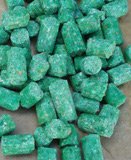 Writing in the Press, Prof Ian Shaw clearly lays out the toxicology of 1080, the pest control poison that is making headlines after an unknown person threatened to use it to contaminate infant formula in New Zealand.
Writing in the Press, Prof Ian Shaw clearly lays out the toxicology of 1080, the pest control poison that is making headlines after an unknown person threatened to use it to contaminate infant formula in New Zealand.
An excerpt (read in full here):
How toxic is 1080?
Professor Ian Shaw explores why and how 1080 is so toxic and asks what is the risk of a child dying from contaminated formula.
New Zealand is one of a very few countries where four numbers in a specific order – 1080 – leads to vehement debate, outright disagreement and intellectual fisticuffs. This is because our green and pleasant land uses 1080 regularly; other countries have either banned or severely restricted its use because of its non-discriminatory and extreme toxicity.
1080, of course, is used to control animal pests (in particular possums) that are threatening our delicate, unique flora. As a result, there is a significant amount of pure, white crystalline 1080 imported for incorporation into baits designed to appeal to our marauding furry invaders.
Whether we should or should not use 1080 is a debate that has rumbled on for a long time, but is not for consideration here. The vehemence of the debate has led to extreme factions, one of which sent an anonymous letter to the CEO of Fonterra in November threatening to poison milk powder used in infant formula with 1080; and, to prove the point, sent a sample of 1080-laced milk powder with the letter.
So, what is 1080 and why is it so toxic? It is the sodium salt of fluoroacetic acid and is converted to fluorocitric acid in mammalian (including human) cells – this stops cell metabolism dead.
This interesting quirk of biochemistry is the key to 1080’s extreme toxicity because citric acid is important in the generation of energy in cells. To initiate the energy generation process, citric acid is converted by an enzyme to a slightly different molecule (aconitic acid) that is converted to something else which is converted to something else and so on, eventually leading back to citric acid.